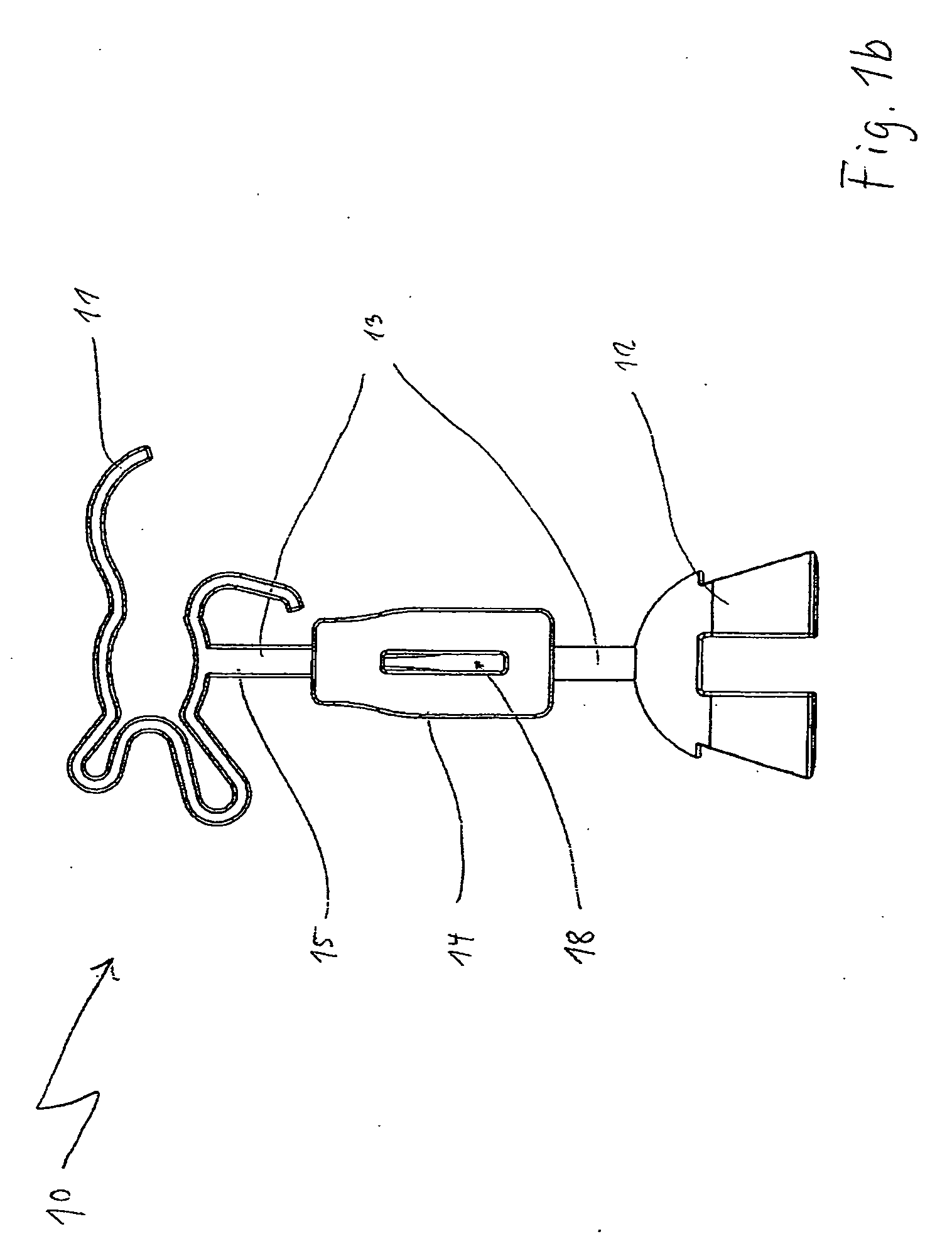Length-variable auditory ossicle prosthesis
a technology of ossicle prosthesis and length, applied in the field of ossicle prosthesis, can solve the problems of reproducibly exact, sound conduction between the eardrum and the inner ear, and the inability to maintain the length setting of the prosthesis after the operation, and achieve the effect of reproducibly exact and fixed length setting of the prosthesis
- Summary
- Abstract
- Description
- Claims
- Application Information
AI Technical Summary
Benefits of technology
Problems solved by technology
Method used
Image
Examples
Embodiment Construction
[0070]The three embodiments of the auditory ossicle prosthesis 10; 20; 30 according to the invention—differently designed in detail—that are schematically represented in the figures of the drawing in each case have at one end a first securing element 11; 21; 31, which serves for mechanical connection of the prosthesis to the eardrum or a member of the ossicular chain. At the other end of the auditory ossicle prosthesis 10; 20; 30 there is in each case a second securing element 12; 22; 32 for mechanical connection of the prosthesis to a further member or parts of a member of the ossicular chain or for direct insertion into the inner ear. Arranged in between is a connecting element 13; 23; 23, which connects the two securing elements 11; 21; 31 and 12; 22; 32 to each other in a sound-conducting manner and in the case of all the embodiments shown in the drawing is configured in the form of an elongate shaft.
[0071]The connecting element 13; 23; 33 in each case comprises a first piece, w...
PUM
 Login to View More
Login to View More Abstract
Description
Claims
Application Information
 Login to View More
Login to View More - R&D
- Intellectual Property
- Life Sciences
- Materials
- Tech Scout
- Unparalleled Data Quality
- Higher Quality Content
- 60% Fewer Hallucinations
Browse by: Latest US Patents, China's latest patents, Technical Efficacy Thesaurus, Application Domain, Technology Topic, Popular Technical Reports.
© 2025 PatSnap. All rights reserved.Legal|Privacy policy|Modern Slavery Act Transparency Statement|Sitemap|About US| Contact US: help@patsnap.com



